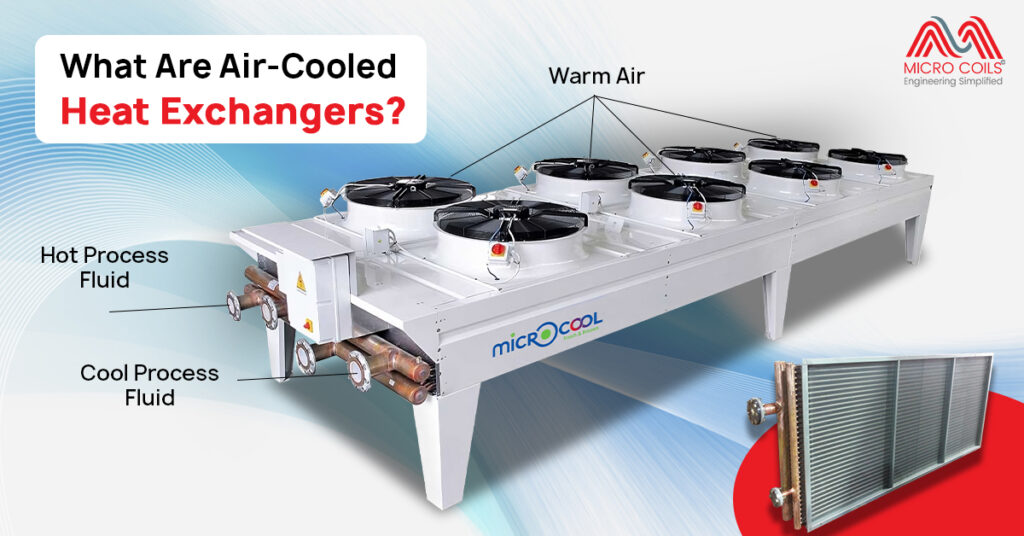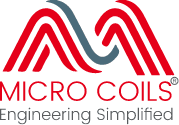
If you’re running an industrial operation, chances are you’ve encountered situations where your equipment generates excessive heat that needs to be managed efficiently. This is where air cooled heat exchanger systems come into play – one of the most practical and cost-effective solutions for industrial cooling needs.
An air-cooled heat exchanger is a specialized piece of equipment designed to transfer unwanted heat from your industrial processes to the surrounding air, keeping your operations running smoothly and safely. These systems serve as critical components in maintaining optimal operating temperatures across various industrial applications.
How Do Air-Cooled Heat Exchangers Work?
The operating principle is elegantly straightforward. Hot fluid from your industrial process flows through a series of tubes or coils. Meanwhile, ambient air is either naturally drawn or mechanically forced across these tubes using fans. As the air passes over the hot surfaces, it absorbs the heat and carries it away, effectively cooling your process fluid.
This heat transfer process relies on the temperature difference between the hot fluid inside the tubes and the cooler ambient air flowing across the external surfaces. The greater this temperature difference, the more efficient the heat transfer becomes.
The Main Components of Air-Cooled Heat Exchangers
Every air-cooled heat exchanger consists of several key parts working together:
Heat Exchange Tubes or Coils
These are the primary components where heat transfer occurs. Hot fluid flows inside these tubes while air flows across the outside surfaces. The tubes are typically made from materials with excellent thermal conductivity properties.
Fans and Motors
Most modern systems use electric fans to move air across the tubes. These can be either forced draft (fans push air through) or induced draft (fans pull air through), depending on the specific application requirements.
Frame and Support Structure
A robust framework holds everything together and can withstand outdoor weather conditions and operational stresses. This structure must be engineered to handle both the equipment weight and environmental loads.
Headers and Piping
These components distribute the hot fluid into the tubes and collect the cooled fluid as it exits the system, ensuring proper flow distribution and system efficiency.
Why Choose Air-Cooled Over Water-Cooled Systems?
Water-cooled systems have their place, but air-cooled systems offer several compelling advantages for many businesses:
- Water Independence: These systems eliminate dependence on water availability or quality, making them ideal for water-scarce regions or operations wanting to avoid ongoing water costs. There’s no risk of water-related corrosion or scaling issues.
- Lower Operating Costs: Once installed, air-cooled systems typically have lower ongoing operational expenses. No water treatment chemicals, no water disposal fees, and generally less maintenance complexity compared to water-cooled alternatives.
- Environmental Benefits: These systems don’t discharge heated water into local water sources, making them more environmentally friendly and helping you meet regulatory requirements more easily.
- Installation Flexibility: Air-cooled units can be installed in locations where water isn’t readily available or where water discharge regulations are restrictive.
Common Applications of Air-Cooled Heat Exchangers Across Industries
Air-cooled heat exchangers serve numerous industries and applications:
- Oil and Gas Operations: Refineries use these systems to cool various process streams, from crude oil to refined products. They’re particularly valuable in remote locations where water sources are limited or unavailable.
- Power Generation: Power plants employ air-cooled condensers to convert steam back to water without requiring large volumes of cooling water from rivers or lakes, reducing environmental impact.
- Chemical Processing: Chemical plants rely on these systems to control temperatures in various reaction processes and to cool product streams before storage or further processing.
- HVAC Systems: Large commercial buildings and industrial facilities use air-cooled chillers as part of their air conditioning systems, providing reliable climate control.
- Manufacturing: Various manufacturing processes generate heat that needs to be removed to maintain product quality and equipment reliability across different production lines.
Design Considerations of Air-Cooled Heat Exchangers for Your Business
When evaluating air-cooled heat exchangers for your operation, several factors will influence the optimal design:
Climate Impact: The ambient air temperature directly affects performance. Systems designed for hot climates need larger surface areas or more powerful fans to achieve the same cooling effect as those in cooler regions.
Space Requirements: Air-cooled systems typically require more space than water-cooled alternatives due to the need for adequate airflow around the unit. Consider your facility layout and available real estate.
Noise Considerations Fan operation generates noise, which may be a concern in urban environments or near residential areas. Modern designs can incorporate noise reduction features when required.
Maintenance Access: Ensure your chosen system allows easy access for routine maintenance, cleaning, and potential repairs without disrupting other operations.
Recommended Read – What to do when AC starts making noise?
Performance Factors of Air-Cooled Heat Exchangers That Matter
Several key factors influence the efficiency and effectiveness of air-cooled heat exchangers:
Heat Transfer Surface Area
More surface area means better heat transfer capability. This is achieved through finned tubes or extended surfaces that maximize contact between the hot fluid and cooling air.
Air Flow Rate
Adequate air movement across the heat transfer surfaces is crucial. This is controlled by fan sizing, speed, and system design to ensure optimal heat removal.
Temperature Approach
The difference between the outlet temperature of your process fluid and the ambient air temperature affects system efficiency. Closer approaches require larger, more expensive equipment.
Economic Benefits for Your Operation
Investing in air-cooled heat exchangers can provide substantial economic advantages:
Energy Efficiency: Modern air-cooled systems are designed for optimal energy consumption, using variable speed drives and efficient fan designs to minimize power usage while maintaining performance.
Reduced Infrastructure Costs: No need for cooling towers, water treatment systems, or extensive piping networks that water-cooled systems require, reducing both initial investment and ongoing maintenance costs.
Operational Reliability: Fewer moving parts and simpler systems generally mean higher reliability and less downtime, directly impacting your bottom line through consistent operations.
Maintenance and Longevity
Proper maintenance ensures your air-cooled heat exchanger operates efficiently throughout its service life:
Regular Cleaning: Airborne contaminants can accumulate on heat transfer surfaces, reducing efficiency. Regular cleaning maintains optimal performance and extends equipment life.
Fan Maintenance: Motors, bearings, and fan blades require periodic inspection and maintenance to ensure reliable operation and prevent unexpected failures.
Tube Inspection: Regular inspection of heat exchanger tubes helps identify potential issues before they become costly problems, maintaining system integrity.
Recommended Read – Your Ultimate Guide to the Difference Between Condenser and Heat Exchanger
Making the Right Choice
Selecting the appropriate air-cooled heat exchanger for your specific application requires careful consideration of your operational requirements, environmental conditions, and budget constraints. Working with experienced engineers and suppliers ensures you get a system that meets your performance requirements while providing reliable, cost-effective operation for years to come.
These systems represent a mature, proven technology that continues to evolve with improvements in materials, design techniques, and control systems. For many industrial applications, air-cooled heat exchangers offer the optimal balance of performance, reliability, and cost-effectiveness that modern businesses require.
Air-cooled heat exchangers typically last 15-25 years with proper maintenance, though lifespan varies based on operating conditions. Factors affecting longevity include ambient air quality, corrosive environments, operating temperatures, maintenance frequency, and material selection. Units in coastal areas face salt corrosion challenges, while desert installations deal with dust accumulation. Regular cleaning and preventive maintenance can extend operational life beyond manufacturer specifications.
Performance varies with ambient temperature changes. In winter, these systems become more efficient due to greater temperature differentials, but may require freeze protection for process fluids. Desert climates reduce efficiency due to high ambient temperatures, requiring larger units or supplemental cooling. Dust storms necessitate frequent cleaning, while humidity affects corrosion rates. Proper design considerations address these environmental challenges effectively.
Air-cooled systems typically consume more electrical power due to fan operation, especially in hot climates where larger fans or multiple units are needed. However, they eliminate water pumping energy and treatment costs. Total energy consumption depends on local electricity rates, water costs, and ambient conditions. In water-scarce regions, air-cooled systems often prove more economical despite higher electrical consumption.
Modern air-cooled heat exchangers handle variable loads through several control methods. Variable frequency drives adjust fan speeds based on process requirements, while multi-fan systems can cycle units on/off as needed. Louvers control airflow direction and volume. These control systems maintain optimal outlet temperatures while minimizing energy consumption during partial load conditions, providing operational flexibility for varying production demands.
Maintenance typically includes monthly visual inspections, quarterly cleaning depending on environment, semi-annual fan motor servicing, and annual comprehensive inspections. Total annual maintenance costs average 2-4% of initial equipment cost, significantly lower than water-cooled systems requiring chemical treatment and cooling tower maintenance.





